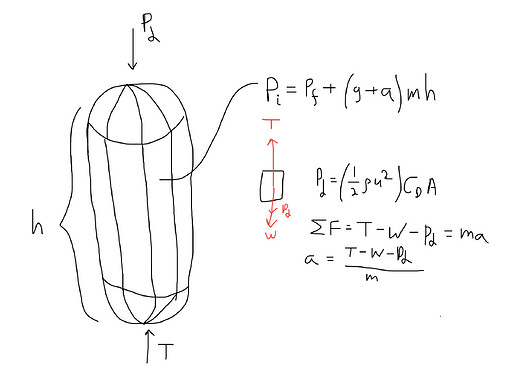The main point of testing is to ensure it’ll perform in action. So, I’d start by looking at the forces acting on this pressure vessel and determining how it varies with time.
External Forces:
- Thrust due to rocket engine
- Force due to dynamic pressure/drag as it travels through the atmosphere.
Internal Forces:
- Static pressure of the stored fluid
- Head pressure due to gravity and also the rocket’s acceleration
Failure Modes:
- The internal pressure could cause the vessel to crack
- The dynamic pressure and thrust created could cause buckling
- Depending on angle in flight, shear, bending, torsion stresses could be induced in the body as well
- Vibration due to engine or air resistance could cause failure from fatigue
- Cryogenic liquids are very cold which could change material behavior
Setting up the test:
-
Failure could be obviously or subtle, so setting up sensors such as strain gauges and thermocouples can reveal more information
-
FBD:
-
For a static testing of external forces, I would make the case that the force of thrust should be applied. If you look at an element, it’ll have different compressive stresses due to each force but the stress due to trust will be the highest. So, I think it’d be more robust to use that value (assuming its the higher of the two).
-
Internal stresses will also play a role, which is largely due to the pressure of the fluid (held at a temperature simliar to launch conditions) which varies with height due to gravity and acceleration.
-
Assuming you have data on the thrust that will be generated and the mass of the rocket in real-time, you can find kinematic values like velocity and acceleration to compute other values
-
Over the course of this time, the applied force (to simulate thrust or drag+weight) and pressure of the fluid can be varied to ensure the pressure vessel suffices
-
Axial and hoop stresses will also develop due to internal pressure as well, but will counteract some of the compressive stresses experienced in the vertical direction
